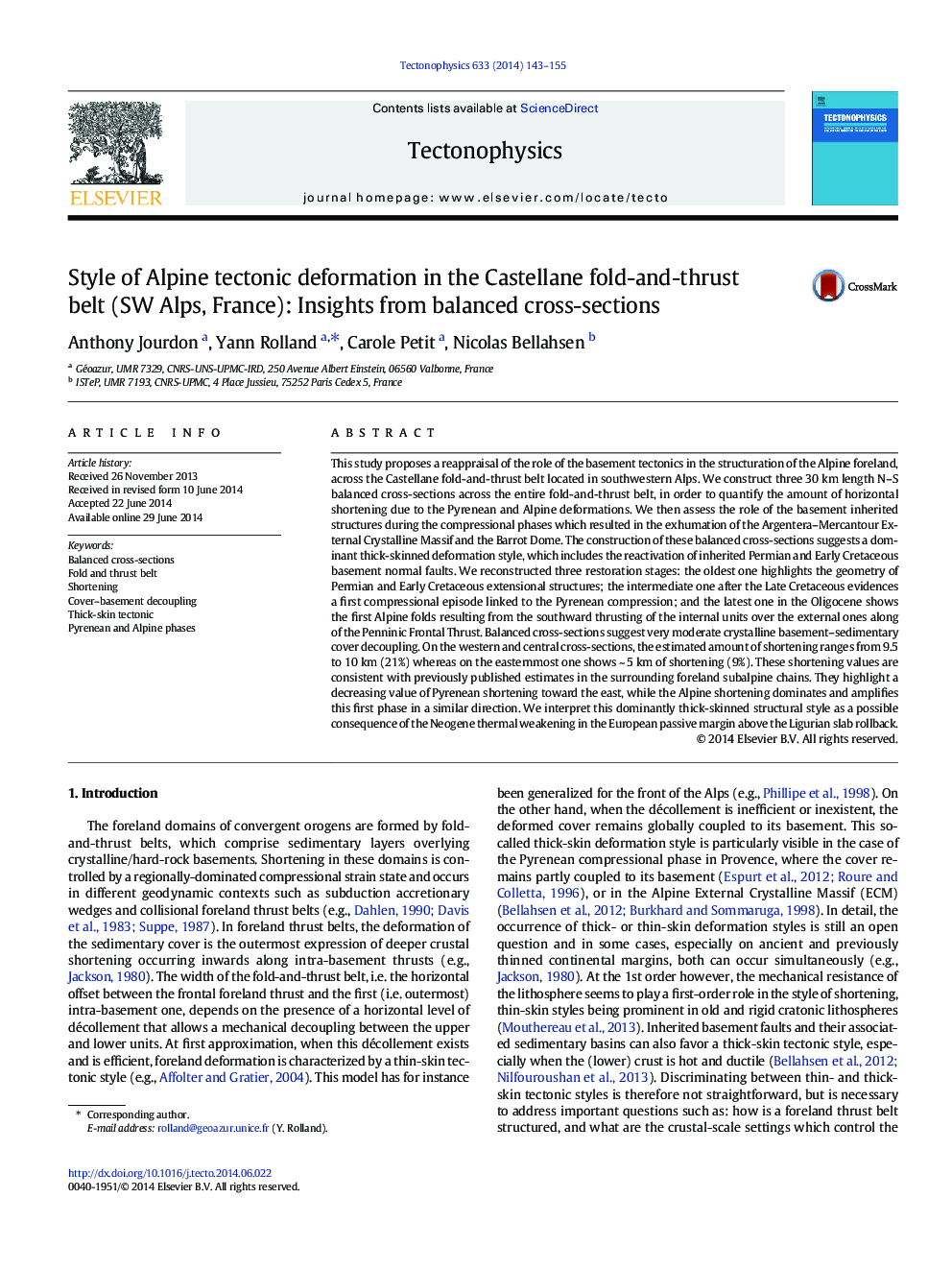| کد مقاله | کد نشریه | سال انتشار | مقاله انگلیسی | نسخه تمام متن |
|---|---|---|---|---|
| 6433804 | 1636758 | 2014 | 13 صفحه PDF | دانلود رایگان |

- Three 30Â km-balanced geological cross sections are proposed.
- Restorations in 3 stages are reconstructed from the Lower Cretaceous.
- No or little crystalline basement-sedimentary cover decoupling is proposed.
- Prominence of basement (thick-skin) tectonics into the Alpine foreland deformation
- Pyrenean compression decreases significantly from W Provence to Castellane Arc.
This study proposes a reappraisal of the role of the basement tectonics in the structuration of the Alpine foreland, across the Castellane fold-and-thrust belt located in southwestern Alps. We construct three 30Â km length N-S balanced cross-sections across the entire fold-and-thrust belt, in order to quantify the amount of horizontal shortening due to the Pyrenean and Alpine deformations. We then assess the role of the basement inherited structures during the compressional phases which resulted in the exhumation of the Argentera-Mercantour External Crystalline Massif and the Barrot Dome. The construction of these balanced cross-sections suggests a dominant thick-skinned deformation style, which includes the reactivation of inherited Permian and Early Cretaceous basement normal faults. We reconstructed three restoration stages: the oldest one highlights the geometry of Permian and Early Cretaceous extensional structures; the intermediate one after the Late Cretaceous evidences a first compressional episode linked to the Pyrenean compression; and the latest one in the Oligocene shows the first Alpine folds resulting from the southward thrusting of the internal units over the external ones along of the Penninic Frontal Thrust. Balanced cross-sections suggest very moderate crystalline basement-sedimentary cover decoupling. On the western and central cross-sections, the estimated amount of shortening ranges from 9.5 to 10Â km (21%) whereas on the easternmost one shows ~Â 5Â km of shortening (9%). These shortening values are consistent with previously published estimates in the surrounding foreland subalpine chains. They highlight a decreasing value of Pyrenean shortening toward the east, while the Alpine shortening dominates and amplifies this first phase in a similar direction. We interpret this dominantly thick-skinned structural style as a possible consequence of the Neogene thermal weakening in the European passive margin above the Ligurian slab rollback.
Journal: Tectonophysics - Volume 633, 21 October 2014, Pages 143-155